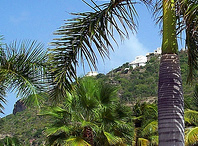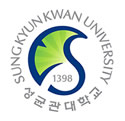

 |
The Third International Conference on Bioenvironment, Biodiversity and Renewable Energies BIONATURE 2012 March 25-30, 2012 - St. Maarten, Netherlands Antilles |
|
|||||||||||
| Details: |
ISBN: 978-1-61208-191-5 |
|
||||||||||||||||
All tracks/topics are open to both research and industry contributions.
Area Topics and Tracks:
A. Bioenvironment (climate, global warming, hydrology, wind science, pollution, economics)
- Climate (Climate change; Global warming; Greenhouse gases; Deforestation; Bio-safety and occupational health, sea level rise, climate adaptation)
- Hydrology (rivers; precipitations; snow; flood; drought; hydropower; waterways; glacier melting, soil moisture)
- Wind science (wind streams; wind-driven seed invasion; wind forecasts; tornados; in-land and off-shore winds, soil moisture, hurricanes)
- Cryosphere (International Polar Year, Arctic sea ice reduction, ice sheet mass balance, permafrost, snow cover, lake and river ice, atmospheric chemistry)
- Public health (Pollution; Acid rains; Pollution impact (light, air, drinking water, earth, respiratory health, planetary oceans); Pollution factors (toxins, chemical, nuclear, garbage, noise); Carbon dioxide pollution; Biological pollution (invasion( ; Pollution prevention, control and engineering)
- Economics (Ecological economics; Bio-agriculture; Environmental impacts of aquaculture; Bio-industry, Urban change, Mega urban, Population dynamics)
- Responsibility (Social responsibility; Corporate responsibilities; Government responsibilities, Carbon footprint, Oil spill)
B. Biodiversity and invasion control (marine, oceanic, Arctic(Antarctic, forests, bioinvasion)
- Marine & oceanic bio-technologies (Marine science; Microbiology am marine eco-systems; Measuring impact of organic pollutants; Marine-derived drugs; Drug discovery sand marine -derived compounds; Cosmetics; Nutritional Supplements; Artificial bones; Glues for mussels; Heat resistant enzymes)
- Oceanic bio-diversity (Coastal health; Measurement and predictions; Environmental change predictions; Reef and marine ecosystems; Microscopic plankton; Diagnostic and therapeutic agents; Bio-mineralization and nano-technologies; Aquaculture; Algology, Ocean acidification)
- Arctic and Antarctic bio-pulse (Resource exploitation and large-scale eco- perturbations; Under-ice ecosystems; Adaptation and survival strategies; Food-chain dependence survival; Aeronomy; Monitoring ozone holes; Polar stratospheric clouds; Glaceology; Loss of ice modeling; Ice shelves’ move prediction; Wildlife and endurance in cold eco-systems, Bromine explosion, Mercury deposition)
- Forest landscape (Monitoring landscape changes; Methods and tools to assess and manage changes; Conservation criteria; Restoration planning; Patterns and processes in changing landscapes; Scaling in landscape analysis; Disruptions in landscape changes; Biodiversity conservation during landscape planning and changing; Management and sustainability of changing landscapes, Wildland-urban interface, Wetland change, Land cover/land use, Wildfire)
- Bioinvasion (Detection and warning systems; Control and sustainable management; Risk assessment; Invasive species; Ecological adaptation; Fragmentation and scale effect; Biological invasions and climate change; International conventions on biological invasions; Public awareness and education)
C. Renewable and Sustainable Energies
- Energy sustainability (Big consumers; Small consumers; Active consumers; Passive consumers; Energy-intensive technologies; Energy-intensive devices; Energy-intensive services and applications; Energy-intensive mission-critical applications; Energy-intensive safety applications; Home appliance consumption; Smart grid solutions; Telecommunications energy efficient solutions; Energy control and optimization in data centers; Interfaces for energy interchange; Alternative energy sources)
- Energy bioscience (Bioenergy, biopower, biofuels; Bioprocessing solutions; Physical biosciences; Photosynthetic systems; Energy transduction systems; Ultrasonic technologies; Geothermal energy; Ocean thermal energy; Ocean waves energy; Ocean tides energy; Vibration based, piezoelectric, and nanogenerators; Body pulse; Hybrid energy)
- Eolian Energy (Wind energy turbines; Wind farms; Eolian production systems; Storage for eolian energy; Integration between eolian systems and classical energy systems; Independent and corporate producers; Feed-in tariffs)
- Photovoltaic solar energy (Solar energy; Solar collector; Collector systems; Solar energy utilization; Solar Photochemistry; Energetic potential; Storage for eolian energy)
- Biomass energy (Plant and non-medical microbial systems; Thermo-chemical conversion of biomass fuels; Feedstock development (switchgrass, miscanthus, etc.); Biomass depolymerization; Biofuels production; Fossil fuel bioprocessing; Cleaner energy from renewable plant materials; Ethanol plants and bio-refineries)
- Green energy technologies and economic models (Chemistry and nanotechnology to improve biodiesel production; Potential of mitigation of atmospheric change through the development of herbaceous energy crop; Development of accessible mechanistic mathematical models; Environmental effects on photosynthesis to plant productivity; Social acceptability of energy crops; Legislation and standards; Economic, environmental, and social challenges for renewable energy)


